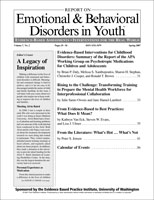The Prevalence, Development, and Classification of Anorexia Nervosa and Implications for Diagnosis
Author: Bryn E. Schiele.
Source: Volume 14, Number 02, Spring 2014 , pp.43-46(4)

< previous article |next article > |return to table of contents
Abstract:
Anorexia nervosa is a serious illness characterized by disordered body perception and patterns of eating that result in dangerous weight loss as well as a variety of other health concerns. This all too common disorder emerges in late adolescence and early adulthood, with 90% to 95% of all diagnosed individuals being female. Despite the frequency with which this pattern of behavior is seen, the etiology of the disorder remains unknown, with numerous cognitive, emotional, neurological, familial, and social factors suggested as potential risks. The lack of understanding regarding the nature of anorexia has unfortunately resulted in questions surrounding the appropriateness of the diagnostic criteria for anorexia in the Diagnostic and Statistical Manual of Mental Disorders (DSM). In response to the changes made in the recently released fifth edition of the DSM (DSM-5), this article reviews the vulnerabilities, symptoms, and course of the disorder. The discussion focuses on the implications for current practice and the development of effective, evidence-based treatments for anorexia.Keywords: Anorexia nervosa; eating disorders; adolescents; diagnostic criteria; DSM-5
Affiliations:
1: University of South Carolina.